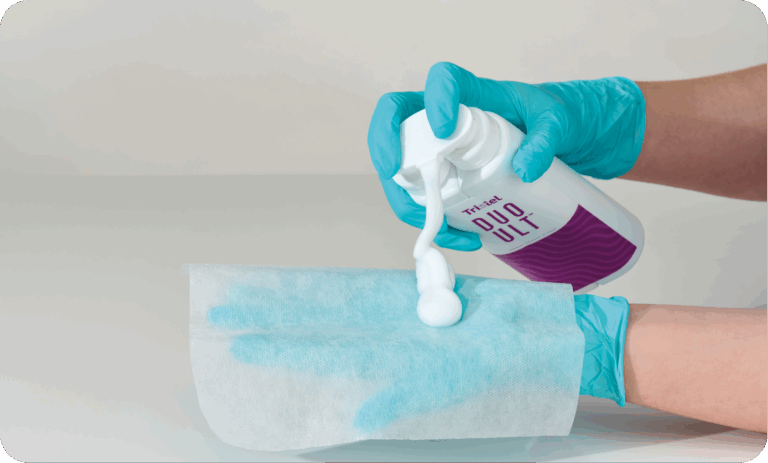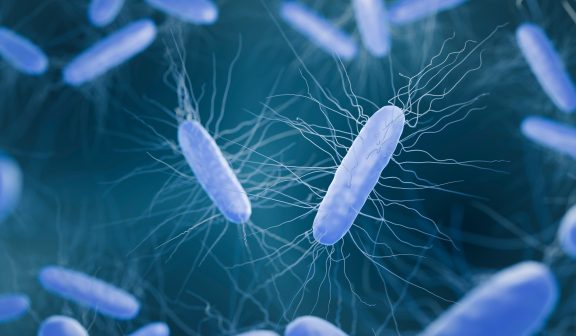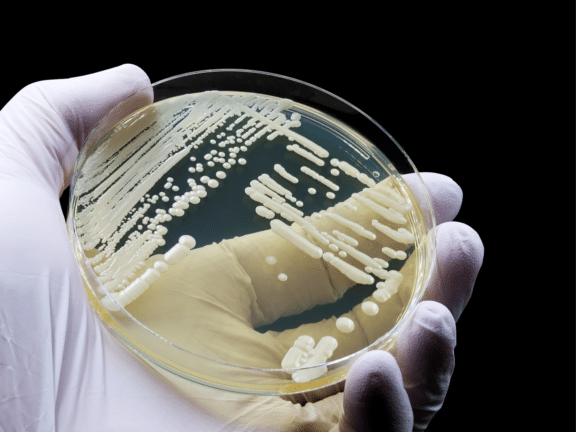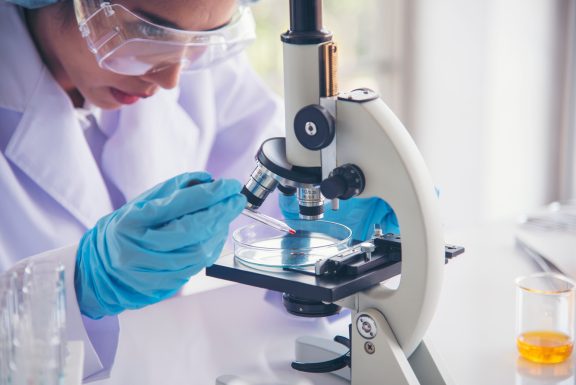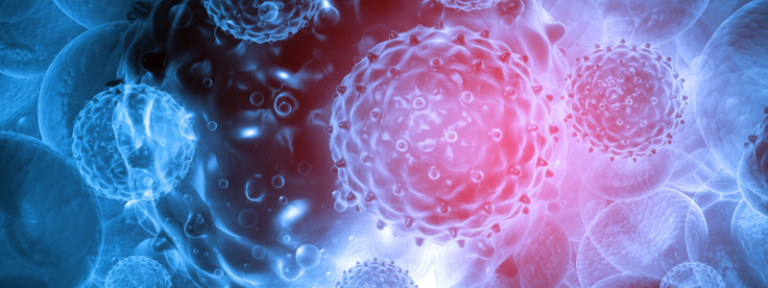
Human papillomaviruses (HPV) are small, non-enveloped DNA viruses that cause a range of diseases from benign warts to threatening cancers. There are over 200 different types of HPV. They are grouped into high-risk and low-risk types based on their potential to cause cancer. Due to its prevalence and persistence, HPV presents a significant challenge in infection prevention and control.
Where is HPV found and how is it transmitted?
HPV is most commonly present in the genital areas but can also be present in the mouth and throat. Additionally, it can persist on medical instruments and surfaces if not properly disinfected, making it a concern in healthcare settings.
The virus spread primarily through vaginal, anal, or oral sex with an infected person. However, it can also be transmitted through close skin-to-skin contact during sexual activity. Importantly, HPV can be transmitted even when no symptoms are present, making it difficult to detect and control. Medical devices used to examine areas, such as the cervix, vagina, throat, and neck, including transvaginal ultrasound probes, colposcopes, and endoscopes, can harbour HPV if not disinfected effectively.
What does HPV cause?
High-risk HPV e.g., Types 16, 18, 31, and 45 are strongly linked to cancers of the cervix, vagina, vulva, anus, penis, and oropharynx (throat). Persistent high-risk HPV infection is estimated to cause:
- 90% of cervical and anal cancers
- 70% of vulvar and vaginal cancers
- 60% of penile cancers
- 70% of oropharyngeal cancers
Low-risk HPV are associated with non-cancerous skin infections, leading to in warts on the feet, hands, elbows and genital areas.
Why is HPV a Challenge in Infection Control?
HPV is particularly difficult to control due to several factors:
- Skin Persistence – HPV can survive on the skin, making transmission easy and prevention challenging.
- Asymptomatic Nature – Many people with HPV do not develop symptoms, leading to unintentional spread.
- Lack of Treatment – There is no cure for HPV, meaning prevention is the best defence.
- Environmental Stability – HPV can remain infectious for up to seven days on contaminated medical surfaces and devices if not properly disinfected.
Additionally, while cervical cancer screening is available in some regions, it is not accessible everywhere, leaving many at risk.
How can you prevent the spread of HPV?
HPV is particularly difficult to control due to several factors:
- HPV Testing & Screening – In the UK, HPV testing is part of cervical screening offered to individuals aged 25 to 64 to help prevent cervical cancer.
- Vaccination – The HPV vaccine protects against the most common types linked to genital warts and cervical cancer.
- Barrier Protection – Condoms can reduce the risk of transmission but do not provide full protection, as they do not cover all skin contact areas.
How can you defend against HPV?
Proper disinfection is critical in preventing HPV transmission in clinical environments. Because HPV is highly resistant to conventional disinfectants, it is essential to use high-level disinfectants with proven virucidal activity.
The most effective disinfectants should:
- Eliminate bacterial spores, vegetative bacteria, mycobacteria, yeast, fungal spores, and viruses
- Prevent cross-contamination between patients
- Protect healthcare professionals during routine procedures
Did you know? HPV can retain 30% of its infectivity for seven days on inadequately disinfected medical surfaces and devices.
Meet Tristel Duo ULT: Proven Protection Against HPV
Research conducted by Meyers et al., (2020) demonstrates the product is effective against infectious HPV types 16 and 18, on a transvaginal ultrasound probe in 30 seconds.
It complies with guidelines for disinfection within ultrasound, such as BMUS, WFUMB and the Society for Maternal Fetal-Medicine.
References:
- Jensen JE, Becker GL, Jackson JB, Rysavy MB. Human Papillomavirus and Associated Cancers: A Review. Viruses. 2024 Apr 26;16(5):680. doi: 10.3390/v16050680. Centres for Disease Control and Prevention (2024). About Genital HPV Infection. [online] Available at: https://www.cdc.gov/sti/about/about-genital-hpv-infection.html?CDC_AAref_Val=https://www.cdc.gov/std/hpv/stdfact-hpv.htm.
- Marur, S., D’Souza, G., Westra, W.H. and Forastiere, A.A. (2010). HPV-associated head and neck cancer: a virus-related cancer epidemic. The Lancet Oncology, 11(8), pp.781–789. Doi:https://doi.org/10.1016/s1470-2045(10)70017-6.
- NHS (2022). Human papillomavirus (HPV). [online] nhs.uk. Available at: https://www.nhs.uk/conditions/human-papilloma-virus-hpv/#:~:text=Human%20papillomavirus%20(HPV)%20is%20the.
- Saraiya, M., Unger, E.R., Thompson, T.D., Lynch, C.F., Hernandez, B.Y., Lyu, C.W., Steinau, M., Watson, M., Wilkinson, E.J., Hopenhayn, C., Copeland, G., Cozen, W., Peters, E.S., Huang, Y., Saber, M.S., Altekruse, S. and Goodman, M.T. (2015). US Assessment of HPV Types in Cancers: Implications for Current and 9-Valent HPV Vaccines. JNCI: Journal of the National Cancer Institute, 107(6). doi: https://doi.org/10.1093/jnci/djv086.
